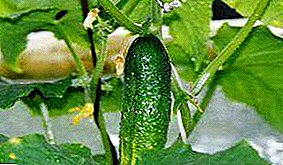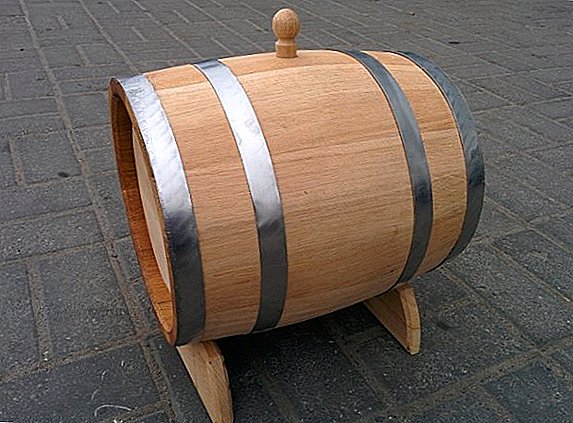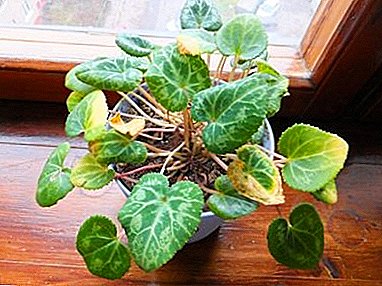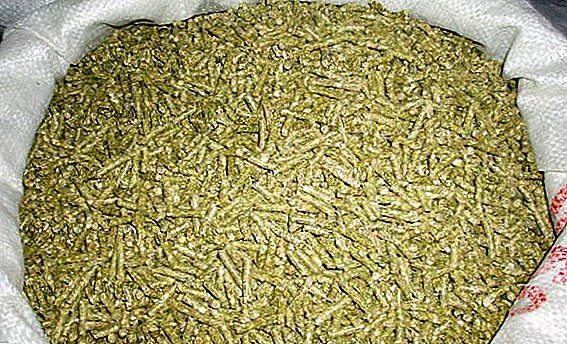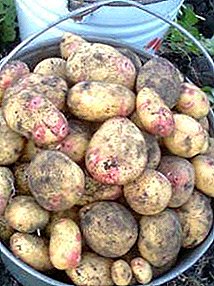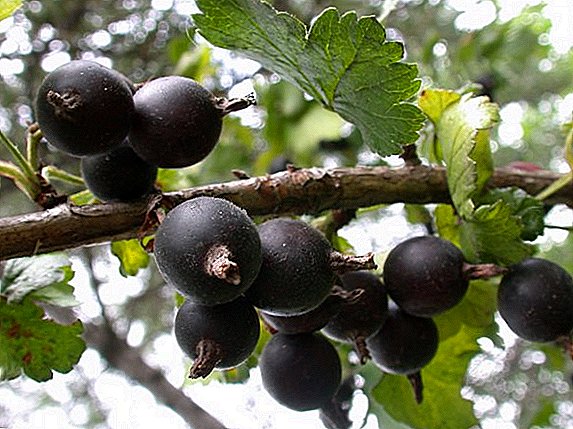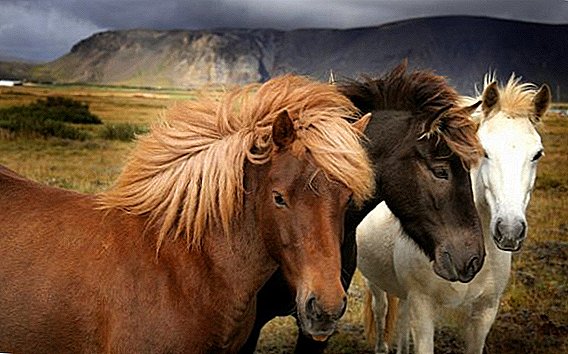 Scientists believe that the first horses tamed by man come from the Kazakh steppes. There are also popular sayings that Kazakhs children learn to ride a horse before they walk, and their best friend among animals is not a dog, but a horse. Thus, it is worth paying attention to the Kazakh breed of horses, which we will do in the article, having considered their history, types, features of application and maintenance.
Scientists believe that the first horses tamed by man come from the Kazakh steppes. There are also popular sayings that Kazakhs children learn to ride a horse before they walk, and their best friend among animals is not a dog, but a horse. Thus, it is worth paying attention to the Kazakh breed of horses, which we will do in the article, having considered their history, types, features of application and maintenance.
The history of the breed
The most popular among scientific theories about the origin of the first domesticated horses is the version that for the first time these animals were tamed in the Kazakh steppes.
Learn how to choose a horse for yourself.
It happened over a millennium BC, and the Kazakh horse in its modern form was finally formed about a thousand years ago. The characteristic features of her were incredible unpretentiousness to the conditions of detention and versatility.  Kazakh horse is equally good as a horse, and as a pack, and as meat and dairy breed. But this universality has the opposite side, because, demonstrating consistently good performance in different areas of its application, a representative of the Kazakh breed cannot show outstanding results in any of these areas.
Kazakh horse is equally good as a horse, and as a pack, and as meat and dairy breed. But this universality has the opposite side, because, demonstrating consistently good performance in different areas of its application, a representative of the Kazakh breed cannot show outstanding results in any of these areas.
Did you know? With the help of riding you can not only develop motor coordination and a sense of balance, but also normalize your blood pressure and the state of the nervous system. Moreover, there is information about getting rid of pulmonary problems as a result of communication with horses.
Exterior and character
Considered a horse of small stature, but strong build. On average, it looks like this:
- height at withers - 1.32-1.38 m;
- torso length - 1.42 m;
- chest girth - 1.56-1.64 m;
- weight - up to 360 kg;
- head is large with a straight or somewhat convex profile;
- neck low set with an average length;
- withers wide;
- the back is long and straight;
- the waist is well-knit and wide;
- croup rounded and somewhat drooping;
- the chest is powerful and wide;
- legs shortish;
- tight skin;
- the mane is very thick;
- the suit - there are up to three hundred species, but the most often found bay and red.
 The nature of this animal is peculiar: it is bold, extremely seasoned and docile, but it is often capable of being capricious, doing everything in defiance of the owner. However, with due patience on the part of man, a Kazakh horse in most cases becomes an obedient animal.
The nature of this animal is peculiar: it is bold, extremely seasoned and docile, but it is often capable of being capricious, doing everything in defiance of the owner. However, with due patience on the part of man, a Kazakh horse in most cases becomes an obedient animal.Types
As a result of persistent selection work, in the end, two main pedigree types of Kazakh horse emerged: Adaevskaya and Dzhaba.
Did you know? In total, about 60 million heads of horses, including wild ones, now inhabit the planet.
Adaev (adaev horse)
During the breeding, this species was seriously affected by the English breed, as a result of which it acquired the excellent qualities of a horse. Having a height of 1.45 m at the withers, the Adaev has a light constitution and a lively temperament. Outwardly, he looks graceful in all three of his main colors - white, golden or bay. 
Jabe (toad)
These low horses, having a height at the withers of only 1.4 m, as a result of crossing with Don trotters, acquired a more noble exterior, but remained extremely resilient animals, enduring even the extreme manifestations of the harsh sharply continental climate. 
Scope of application
Since the Kazakh horse is currently divided into two main intra-breed types, their spheres of application differ. Adaev, showing good qualities of a horse, is used mainly for riding and at races. He is very well trained and looks great on the arena or the racetrack.
Jaba is successfully used as workhorse in small farms, and also as a very productive animal for the meat and dairy industry, gaining weight up to 480 kg. Slaughter yield can reach 60%, and milk production is up to 10 kg per day. At the same time, the taste qualities of jabe meat, unlike other horse breeds, are quite high.
Important! Bangs on the head of the animal should not grow below the level of the eyes, so as not to impair his visibility.
Conditions of detention and care
The main distinguishing feature of the Kazakh breed of horses is the extreme endurance of these animals and their undemanding to thoroughly care for them. Being a nomadic people for a very long time, the Kazakhs did not even think about the stables for their horses, nor about the procurement of feed for them. The horses were kept in the herds all year round in the open air and were content with pasture, extracted also from under the snow. All this is genetically fixed in the breed and has almost reached our days.  Today, jabas can withstand frost down to -40 ° C: if they are kept in stables, then not only without heating, but without any insulation. Adaevskie horses a little more tender and can be contained in the stables, but only protected from drafts and slightly insulated, without any heating. As for the hooves, this important part of the horse's body, due to frequent walking on rocky areas abundant in the southern Kazakh steppes, has acquired extraordinary hardness and practically does not need horseshoes.
Today, jabas can withstand frost down to -40 ° C: if they are kept in stables, then not only without heating, but without any insulation. Adaevskie horses a little more tender and can be contained in the stables, but only protected from drafts and slightly insulated, without any heating. As for the hooves, this important part of the horse's body, due to frequent walking on rocky areas abundant in the southern Kazakh steppes, has acquired extraordinary hardness and practically does not need horseshoes.
Important! In any case of communication with the horse, in no case should one become behind it.
However, this does not save the owner from cleaning the hooves, which should be regularly carried out with the help of a hook and brush. Another feature of this breed is the long wool, which in the winter and saves animals from severe frosts. For the care of her used traditional groomers, brushes, sponges and cloth mittens. Especially the fur, mane and tail are looked after by the Adaev horses, since these beauties are most often in sight. Jaba is not subject to such thorough care.
Feeding
The horses of this breed are happy to feed from grass in any form, since over the millennia their ancestors have become accustomed to eat in winter those pitiful remnants of dry grass that they had to extract with their hooves from under the snow. So ordinary hay harvested for the winter is an excellent food for these animals, and oats, vegetables and fruits are a delicacy for them.  The Kazakh breed of horses outside their native places is poorly distributed. The animals that grew up under the conditions of the Kazakh steppes and who are used to them show themselves well in them, but they do not show the outstanding results that horse breeders around the world expect from their pets. Nevertheless, to improve any breed, bringing into it the genes of endurance and vitality, the Kazakh horses are quite capable.
The Kazakh breed of horses outside their native places is poorly distributed. The animals that grew up under the conditions of the Kazakh steppes and who are used to them show themselves well in them, but they do not show the outstanding results that horse breeders around the world expect from their pets. Nevertheless, to improve any breed, bringing into it the genes of endurance and vitality, the Kazakh horses are quite capable.



